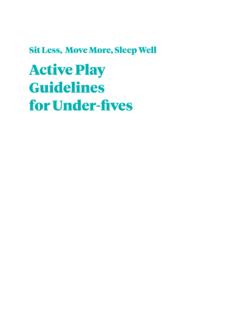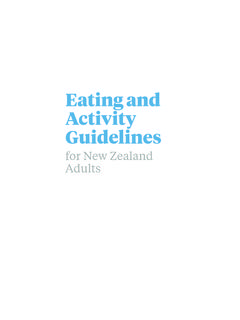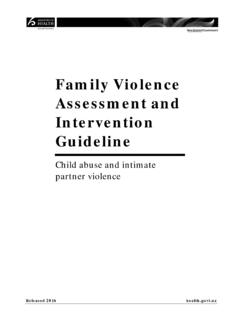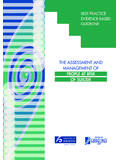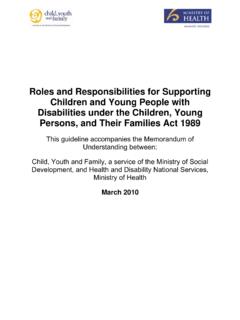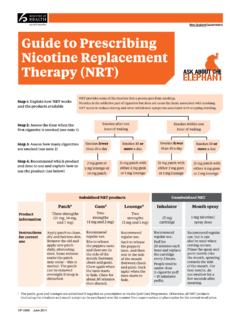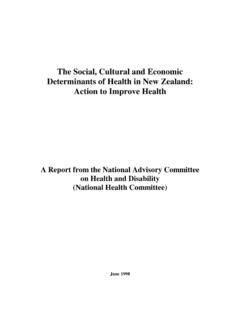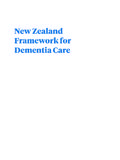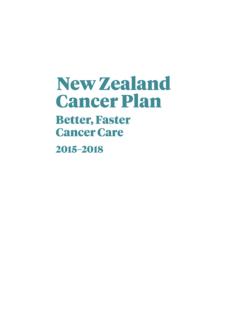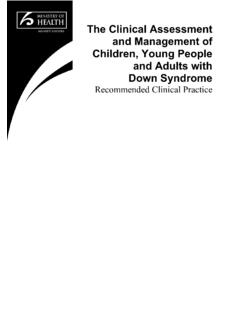Transcription of The Healthy Equity Assessment Tool: A User's Guide
1 The health Equity Assessment tool : A User s Guide The health Equity Assessment tool : A User s Guide The health Equ ty Assessment tool : A User s Gu de The health Equity Assessment tool : A User s GuideCitation: Signal, L., Martin, J., Cram, F., and Robson, B. The health Equity Assessment tool : A user s Guide . 2008. Wellington: Ministry of in June 2008 by the Ministry of health PO Box 5013, Wellington, New ZealandISBN 978-0-478-31744-2 (Print) ISBN 978-0-478-31747-3 (Online) HP 4577 This document is available on the Ministry of health s website: AcknowledgementsThis Guide is the result of the efforts of many people over a number of years. The authors would like to thank their colleagues in the University of Otago, Wellington, and the Ministry of health who worked with us to develop the health Equity Assessment tool and test its application. We would also like to thank all those who provided feedback on the tool . We particularly want to thank the people in Northland and the Ministry of health who trialled the draft Guide .
2 The health Equity Assessment tool : A User s Guide ContentsAcknowledgements Introduct on 11 Reduc ng nequal t es n health 3 Concept of health 3 Causes of health inequalities 3 health inequalities in New Zealand 4 Reducing inequalities outcomes 52 The health Equ ty Assessment tool (HEAT) 6 What it is 6 When to use it 6 Who uses it 7 Guidance for beginners 73 A gu de to the HEAT quest ons 8 Understanding health inequalities 9 Intervening to reduce health inequalities 12 Reviewing and refining your intervention 19 Evaluating the impacts and outcomes of the intervention 204 Examples of the use of HEAT 22 Case study: Northland District health Board tobacco control interventions 22 Case study: Ministry of health oral health policy for children aged 0 18 255 Glossary 28 References 29 Append x A: The health Equ ty Assessment tool 31 Append x B: Or g ns of HEAT 33 Append x C: Selected examples of health determ nants 34 Append x D: Template for HEAT task one, quest ons one to three 36 Append x E: Template for HEAT task two, quest on four 37 Append x F: Template for HEAT task three, quest on five 38 Append x G: Template for HEAT task four, quest ons s x to n ne 39 Append x H: Template for HEAT task five, quest on ten 40 Append x I: Further equ ty resources 41 Feedback form 43 vThe health Equity Assessment tool : A User s GuideF guresFigure 1.
3 The main determinants of health 4 Figure 2. Intervention framework to improve health and reduce inequalities 141 The health Equity Assessment tool : A User s Guide Introduction We all have a role to play in reducing inequalities in health in New Zealand. Regardless of how we measure health .. we find that particular groups are consistently disadvantaged in regard to health . And these inequalities affect us inequalities or health inequities (the terms are used interchangeably) are avoidable, unnecessary and unjust differences in the health of groups of Reducing health inequalities is greatly assisted by tools that enable the Assessment of interventions such as policies, programmes and services. Such tools examine the potential of these interventions to contribute to reducing health inequalities. From such an Assessment , informed decisions can be made about how to build and strengthen policies, programmes and Guide is designed to facilitate the use of one such tool : the health Equity Assessment tool (HEAT).
4 2 HEAT aims to promote Equity in health in New Zealand. It consists of a set of 10 questions that enable Assessment of policy, programme or service interventions for their current or future impact on health inequalities. The questions cover four stages of policy, programme or service Understanding health Designing interventions to reduce Reviewing and refining Evaluating the impacts and outcomes of interventions. HEAT was developed for use in Ministry of health funded workshops to increase the capacity of the health sector to contribute to health Equity . The workshops introduced Ministry of health staff and District health Board (DHB) staff and board members to the use of the Inclusion of HEAT both in the Ministry of health policy process and in the reporting requirements for DHBs since 2004 means that it has been increasingly used throughout New Zealand. The development of this Guide was recommended in a review of the use of Equity tools in the health is a flexible tool that can be used in its entirety or, alternatively, selected questions or groups of questions can be asked for specific purposes.
5 For example, questions one to three can promote the consideration of health inequalities and their causes, while question five can assist with assessing a policy, service or programme s responsiveness to Ma HEAT questions can be used to provide a quick overview of potential issues and gaps in policies, services and programmes, such as gaps in information or stakeholder involvement. Alternatively, more in-depth responses to the HEAT questions can assist in developing an evidence base for policy, service and programme development and/or Guide contains five main sections. Section 1 presents a brief overview of health inequalities. The goal of this section is to give an introduction to health inequalities and provide a context for using health Equity Assessment tool : A User s Guide Section 2 introduces HEAT and its use. The goal of this section is to provide an overview of the tool and orient the user to its use. Section 3 looks in more depth at each of the HEAT questions.
6 It suggests methods for framing the answers to these questions. The goal of this section is to Guide readers through the 10 HEAT questions. Section 4 provides two case examples of the use of HEAT. Section 5 is devoted to reference material and appendices. It includes a copy of HEAT (see Appendix A). A glossary of terms and a feedback form are also supplied at the end of this The health Equity Assessment tool : A User s Guide 1 Reducing inequalities in health health is a state of complete physical, mental and social well-being and not merely the absence of disease or is considerable local and international evidence of significant inequalities in health . These inequalities are found between socioeconomic groups, between ethnic groups, between people living in different geographical regions and between males and , 6, 7 Research indicates that the poorer you are, the worse your health will be. And in some countries with a colonial history, including New Zealand, indigenous people have poorer health than non- indigenous World health Organization recognises that reducing inequalities in health is important because health is a fundamental human Reducing health inequalities has been identified as a key goal of governments internationally9 13 and is a priority for our own government.
7 The New Zealand health Strategy acknowledges the need to address health inequalities as a major priority requiring ongoing commitment across the sector .10 This section will provide you with an overview of health inequalities and the rationale for reducing Concept of healthThe World health Organization defines health as not merely the absence of disease or infirmity .5 The Ottawa Charter identifies several fundamental conditions and resources for health , including shelter, education, income, sustainable resources, social justice and Equity . According to the Charter, improvement in health requires a secure foundation in these basic prerequisites .14 Similarly, many Ma ori views on health focus on wellbeing and see health as more than the absence of disease. This view encompasses tinana (the physical element), hinengaro (the mental state), wairua (the spirit) and wha nau (the immediate and wider family).15 These aspects occur in the context of te whenua (land providing a sense of identity and belonging), te reo (the language of communication), te ao tu roa (environment) and whanaungatanga (extended family).
8 Causes of health inequalitiesInequalities arise from, and are maintained by, the unequal distribution of the determinants of health ,17 such as income, employment, education, housing, health care and social support (see Figure 1 below). It is the privileging of some people and groups over others by factors such as ethnicity, class, gender, geography or ableism that generates social inequalities. Inequalities are therefore the unfair and unjust result of social and economic policies and practices. And just as inequalities have developed, they can be Guide is consistent with this social approach to the causes of health inequalities, reflecting the shift in international literature in recent years away from biological This change is represented by a move towards a stronger acknowledgement 4 The health Equity Assessment tool : A User s GuideIndividuallifestylefactorsSocialand communitynetworksGeneralsocioeconomic,cu lturalandenvironmentalconditionsAge, sex andconstitutionalfactorsAgricultureand foodproductionEducationWorkenvironmentLi ving and workingconditionsHousingHealthcareservic esWaterandsanitationUnemploymentof factors such as living and working conditions and socioeconomic conditions that instigate and maintain health inequalities (see Figure 1 below).
9 F gure 1. The ma n determ nants of healthSource: Dahlgren and Whitehead health inequalities in New ZealandIn New Zealand, inequalities in health , and in the determinants of health , are , 7, 21 Of particular concern are the large and persistent inequalities experienced by Ma ori. These inequalities increased throughout the 1980s and 1990s, but the situation has improved from 1999 to 2004 with relative inequality for Ma ori compared to European/Other reducing slightly, and absolute inequality declining more notably.* As Blakely et al note, this is a turnaround of major importance if it can be sustained .7 The life expectancy gap between Ma ori and non-Ma ori has closed slightly to years in 2000 02 (a reduction of years on the period 1995 97).21 Pacific peoples experience persistent health inequalities compared to non-Ma ori, non-Pacific people. These inequalities are, however, less pronounced than for Ma ori. Like Ma ori, Pacific peoples experienced increased inequalities throughout the 1980s and 1990s, but these have also declined since 1999, although the decline has not been as significant as it has for Ma to Blakely et al, New Zealand, like all other societies: exhibits a socioeconomic gradient in mortality, with low-income groups experiencing higher risks of dying at every age than their more privileged counterparts.
10 Mortality fell for all income groups from 1981 84 to 2001 04, however, and at much the same rate, with the result that absolute inequality remained stable while relative inequality necessarily increased over the period as a * Absolute inequalities are differences in mortality rates. Relative inequalities are the ratio of these mortality The health Equity Assessment tool : A User s Guide Reducing inequalities outcomesGiven that significant, persistent, unfair and unjust health inequalities in New Zealand can be reduced through more equitable distribution of resources led by fairer social and economic policy, it is critical to do so. Successfully meeting this challenge will result in: a fairer society where everyone has the opportunity for good health an inclusive society, where everyone has a sense of belonging and feels that their contribution is valued improved health and wellbeing for the population as a whole, not just for those groups who are currently experiencing relatively poor health , and a stronger economy because a healthier population can contribute to a richer social and economic , 226 The health Equity Assessment tool : A User s Guide2 The health Equity Assessment tool (HEAT)The health Equity Assessment tool (HEAT) helps users to tackle health inequalities when making health decisions.
